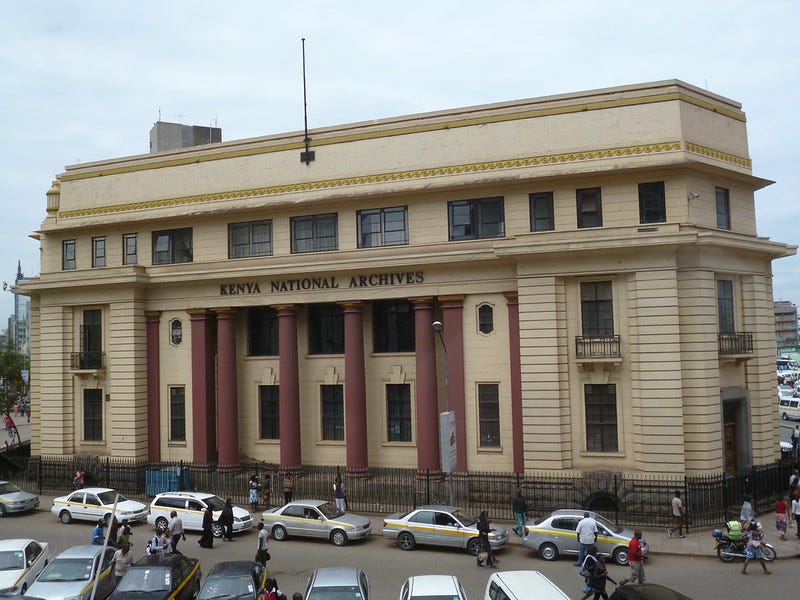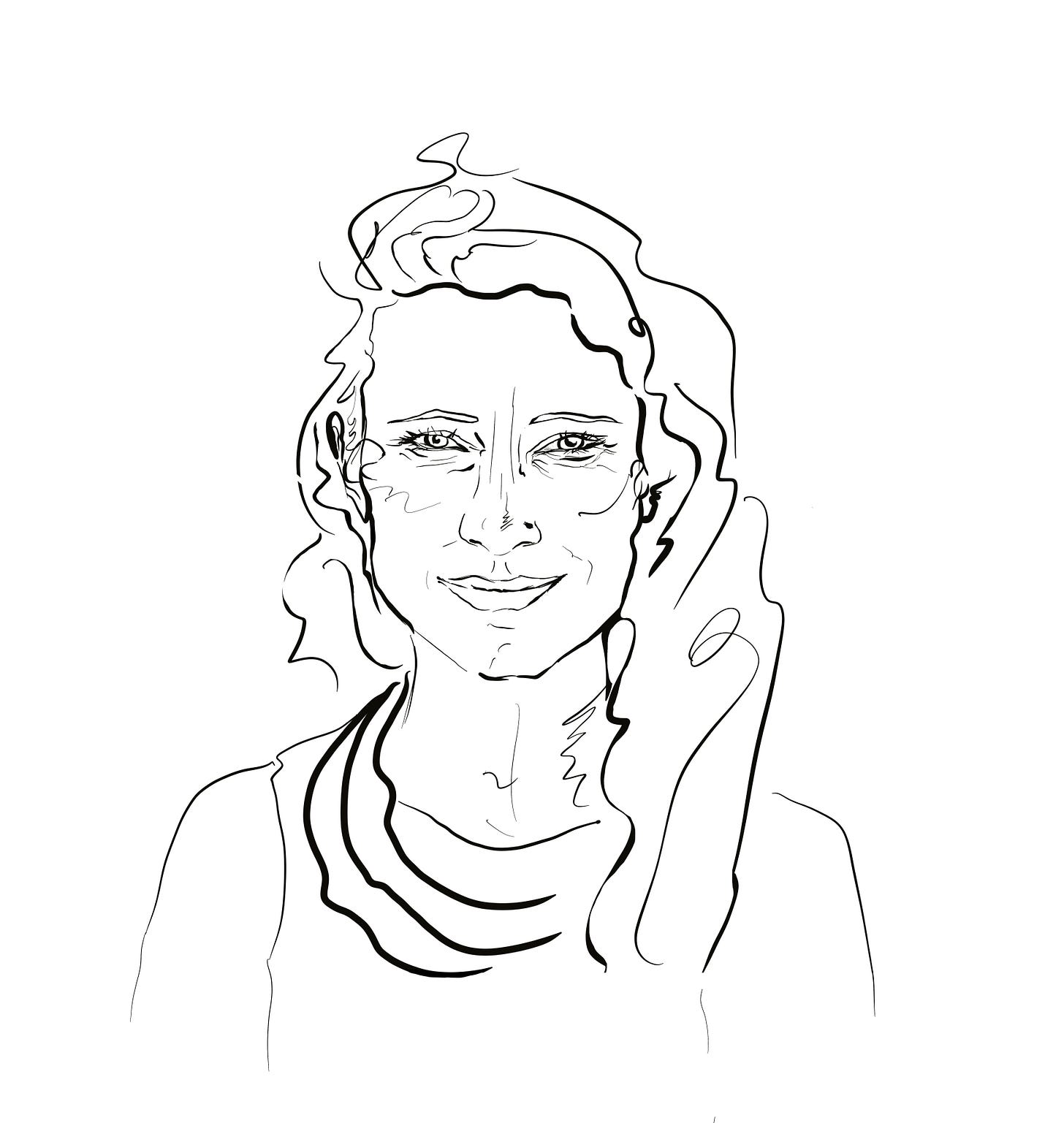How a KFC bag can write history
Protests in Kenya that are charting a new way forward for the country got me thinking about archives.
Dear Reader,
Over the past few months millions of Kenyans have been making their voices heard on the streets and online, in big and small forums, many of them risking their lives, in order to fight for a better Kenya and a better democracy for its citizens. During the protests, Chao Tayiana, a historian and digital heritage specialist that I admire, posted on Instagram about a project she and her organisation African Digital Heritage are launching: a People’s Archive.
They asked people to hand in items from the protests: placards, t-shirts, shoes, posters, even KFC bags - anything that is part of the demonstrations. They want to document and preserve these items to create an archive that is “accessible to present and future generations, preserving this pivotal moment in history”.
“This history is ours to tell and preserve”, they write.
It got me thinking about archives. They might conjure images of dusty shelves or rows of cabinets full of dry government documents, of large government buildings or online archives too confusing to navigate. But that’s not all they can be, not with initiatives such as Chao’s. So I wondered, what role can - and should - archives play in a democracy today?
I recently spent many hours at the Kenyan national archive KNADS in their photo archive. The neo-classical structure stands stoically amongst the bustle of Moi Avenue; it’s so imposing you almost overlook it. To get to the photo archive you enter the multi-storied, wood-panelled entry hall displaying historical artefacts, turn left, climb two flights of creaky wooden stairs and walk across the roof of the building to enter another long corridor.
Off to the left is a small room with filing cabinets along one wall, an old computer in the corner and two wooden tables. I was there with a friend and filmmaker to find old photos and video footage of Nairobi. We started by searching for keywords in the database on the computer, but soon realised it wasn’t coming up with much. So we began to pull open the cabinets, drawer by drawer, taking out folders and patiently looking at each photo individually. The black-and-white pictures showed streets of Nairobi a century ago, the building of the railway, white men standing over carcasses of lions, Kenyan soldiers standing at attention, white women in the shade of parasols.
The extremely narrow point of view that the photos illustrated struck me. It was mostly colonial-era photographs taken by European photographers. Needless to say, they didn’t represent the experience of Kenyans. And how user-unfriendly it was to even find photos made me wonder how many people actually come and use the KNADS, a public good.
But my disheartening experience belied what a huge political role the archives have always played. They were initially founded by the British colonial government in 1956 and housed official documents of all kinds, including those documenting the brutality of the colonial regime. Only two years after Kenya gained independence in 1963 the new government founded the National Archive anew. This was an important move for a young democracy. “The creation of a national archives was viewed as a way to relegate the colonial administration into a fixed past through the physical removal of colonial-era documents from political offices into storage”, writes historian Riley Linebaugh. And for the first time, at least in theory, the archives were accessible to all people in Kenya.
But not before Britain could remove as many incriminating documents as possible. In the final years of colonial rule - knowing it was coming to an end - the administrators removed (or destroyed) thousands upon thousands of documents that could expose how Britain ruled its colony, and concealed their very existence in London for decades. The move was called Operation Legacy and it took place across the crumbling empire. What I didn’t know until recently is that the British High Commission in Nairobi continued to collect documents in Kenya and dispatch them to London well into the 1970s. To this day, thousands of documents remain in British archives (they are euphemistically called ‘Migrated Archives’), inaccessible to Kenyans, impeding the fight for historical justice. Journalist Patrick Gathara argues that even more important than the return of looted artefacts from the Global North is the return of colonial archives.
This would make “Africans the curators of their own history, allowing them, and others, to begin constructing more accurate narratives of colonial experience”, writes Patrick Gathara.
Yet no matter how comprehensive, how accessible and user-friendly the national archive could be, it would still have its limitations. It still offers only a narrow lens into the past, representing primarily the official government view, and that which it wants its citizens to see. Which makes peoples’ archives like Chao’s so important. (There are also other amazing initiatives such as Missing Bits, an oral archive launched by Book Bunk that wants to fill the gaps of the MacMillan library’s archive.)
They can document the perspectives of ordinary citizens, which are so vital in preserving, if not a complete, then a more balanced and multifaceted view of history. And they can document history as it happens, which can shape the trajectory of history itself. This is all the more powerful in days like these when the government is not living up to its mandate to serve its citizens.
History is being written right now.
****
To finish this dispatch, a little roundup:
Chronicles: I’ve had a few stories published in the last few months, but one I would like to highlight is a story I wrote for Elle Magazine ahead of the Olympics. It’s about the gender-based violence many young female Kenyan runners face in the pursuit of their sporting dreams, and how the death of rising star Agnes Tirop threw a spotlight on the issue - and galvanised women around her to fight for change. I’ve also written a number of stories for the Financial Times and the Neue Züricher Zeitung as well as Spiegel Geschichte.
Curations: I recently read The Prince and the Plunder by Andrew Heavens. You might have heard about Ethiopia’s quest to have the remains of a prince - who died around a hundred and fifty years ago in the UK and was buried there - returned. They are hugely significant culturally and historically to Ethiopia, and Britain has again and again denied Ethiopia’s requests for their return. This book tells the story of how Prince Alemayehu came to live and die in the UK; a tale of British conquest and plunder that should be better known. It’s captivating, moving and has you shaking your head throughout.
Historical Tidbits: Did you know that in the 20th century an estimated five to seven languages in Kenya have been lost? This is what a linguist, Kenneth Ngure, told me. Typically, these are languages of smaller tribes (often traditionally hunter-gatherers) that have become assimilated into larger tribes (usually pastoralists) - a result of the social, economic and cultural change that Kenya has undergone in the last hundred years. (In total, Keny has about 70 spoken languages, although how many exactly is disputed.) This is part of some research I’m doing for an upcoming story.
****
I hope you enjoyed this newsletter! If you did, please share it with friends (perhaps you know of any history nerds like me?).
Thank you, and until soon,
Gioia






